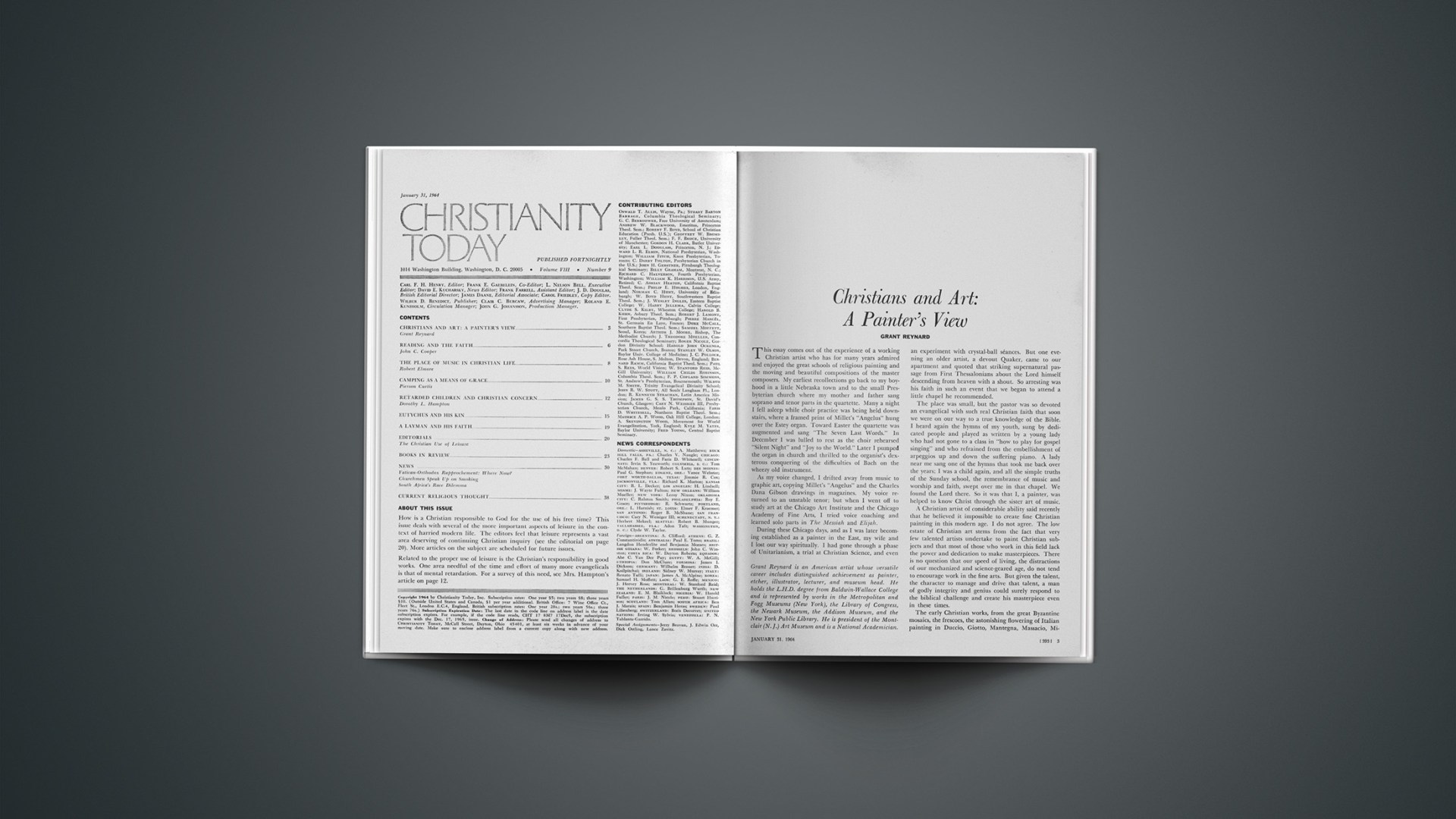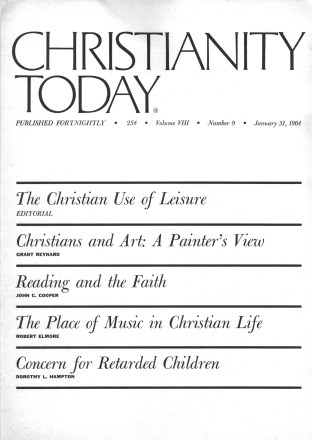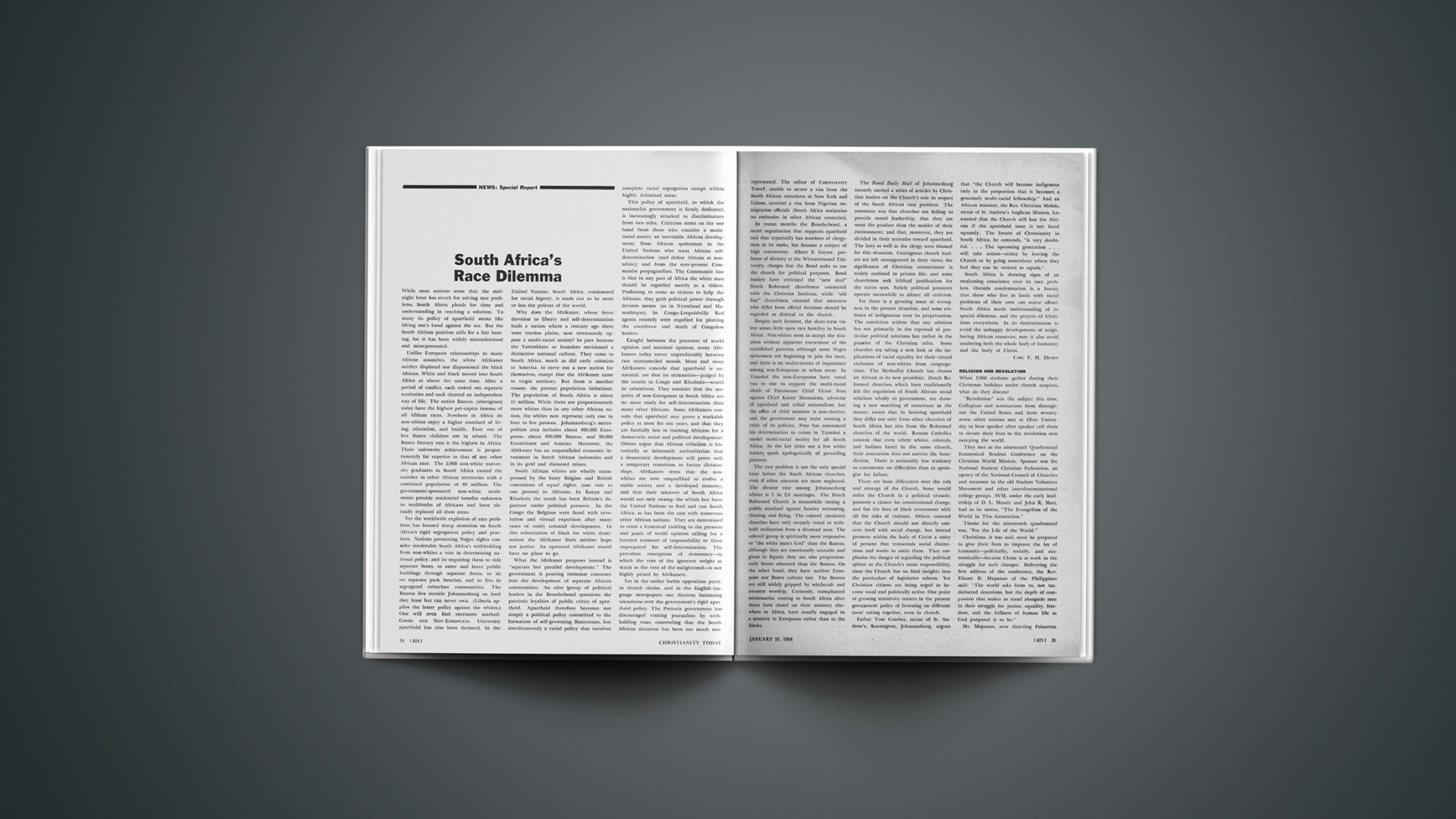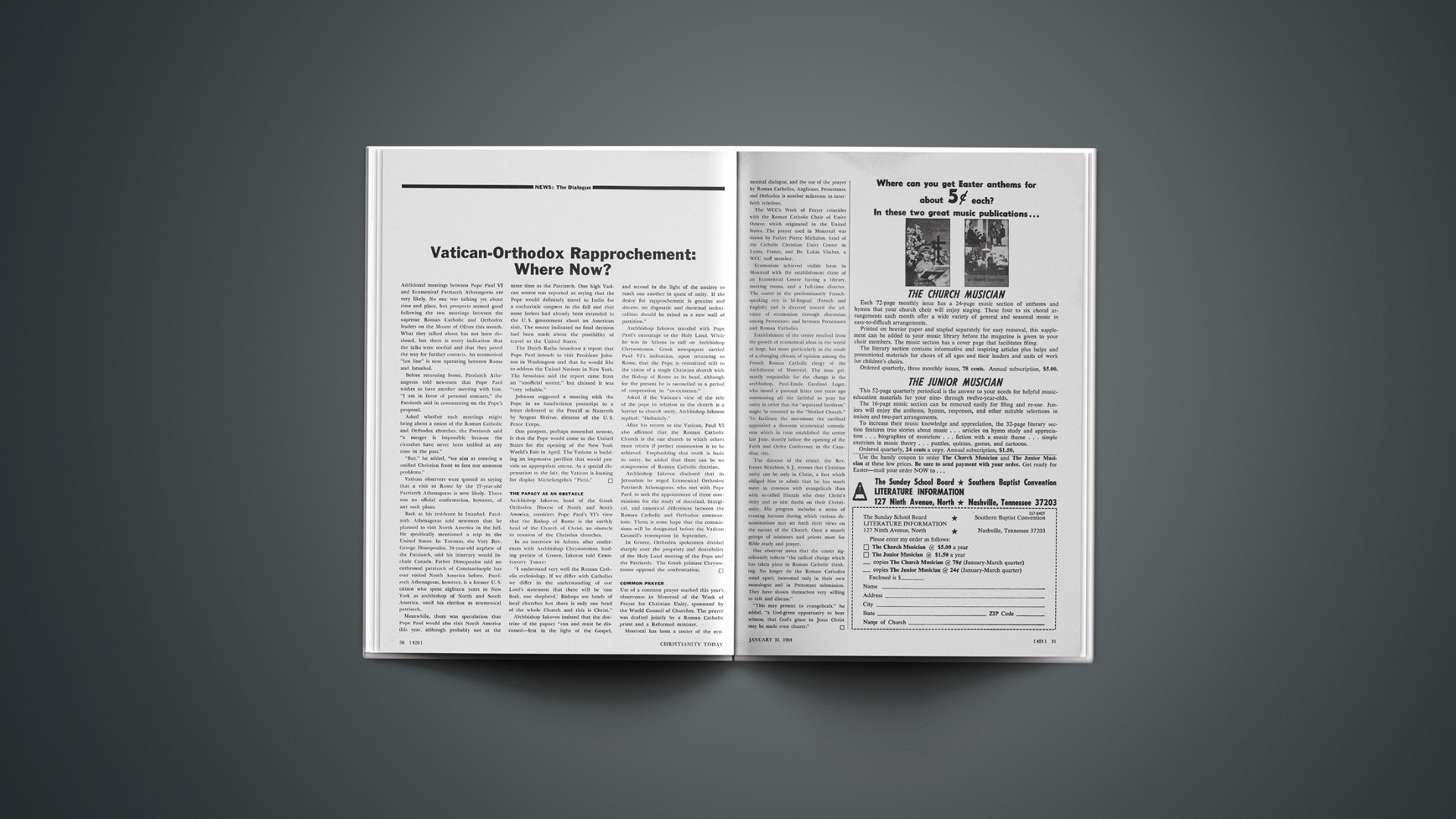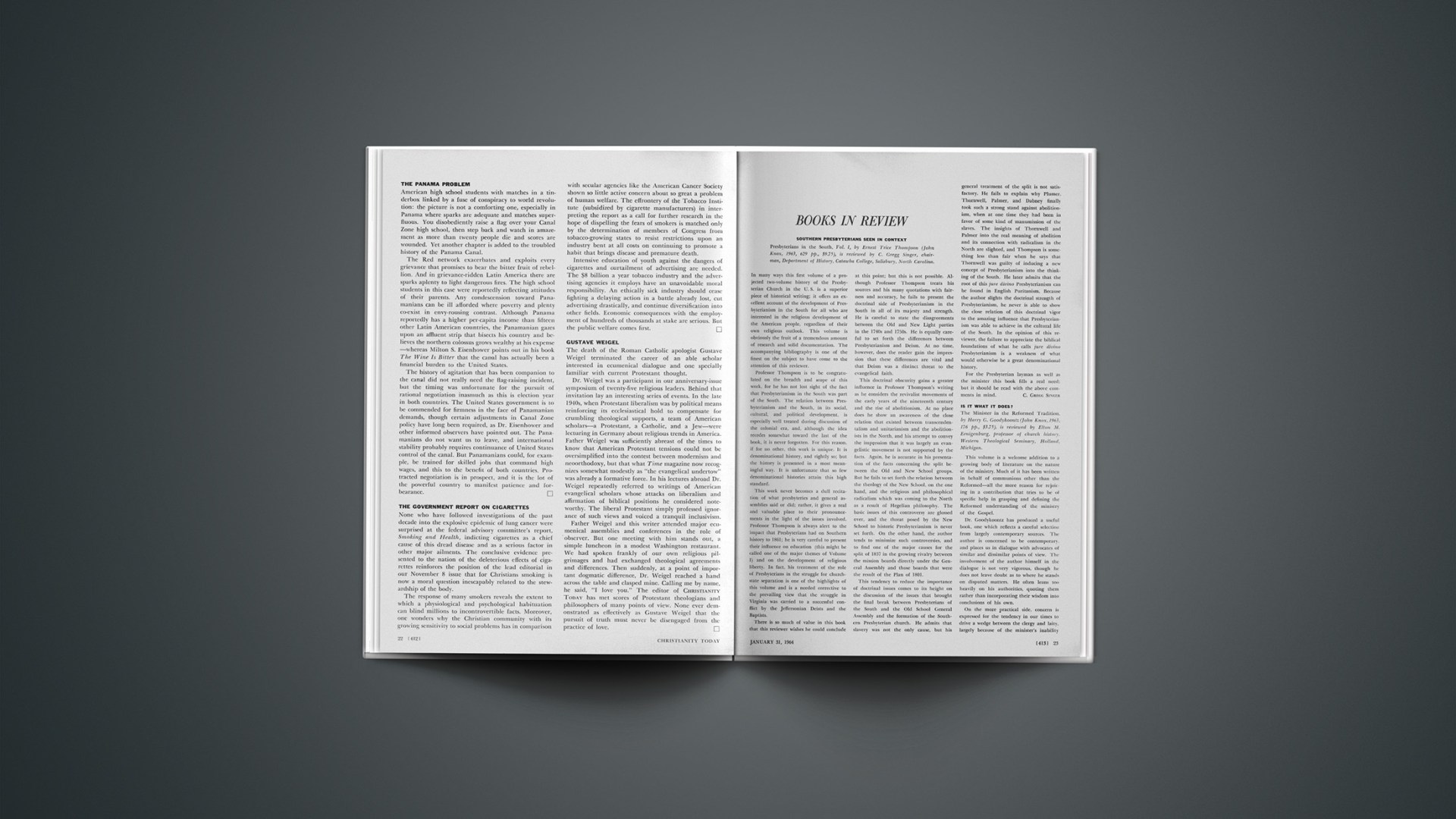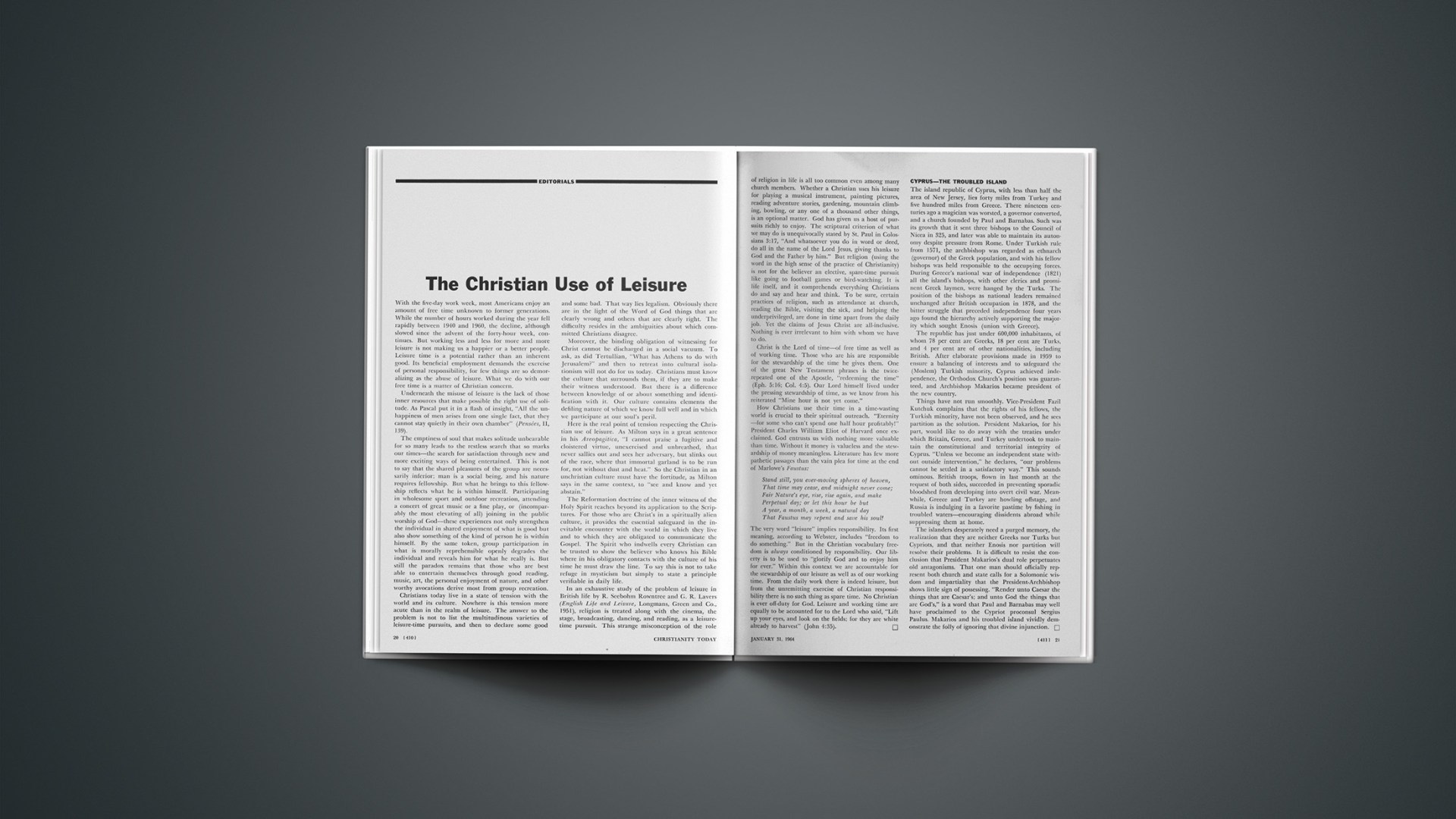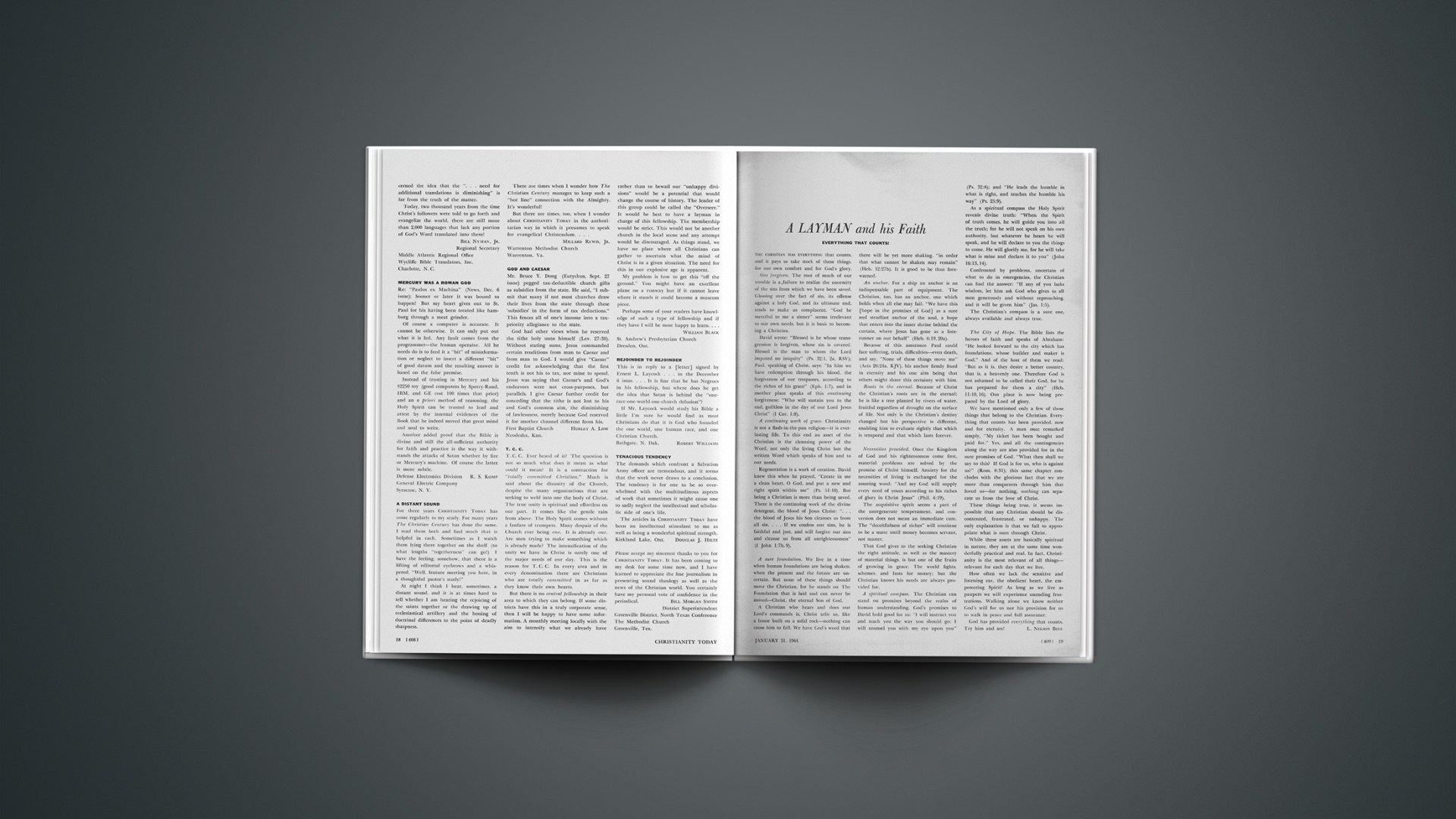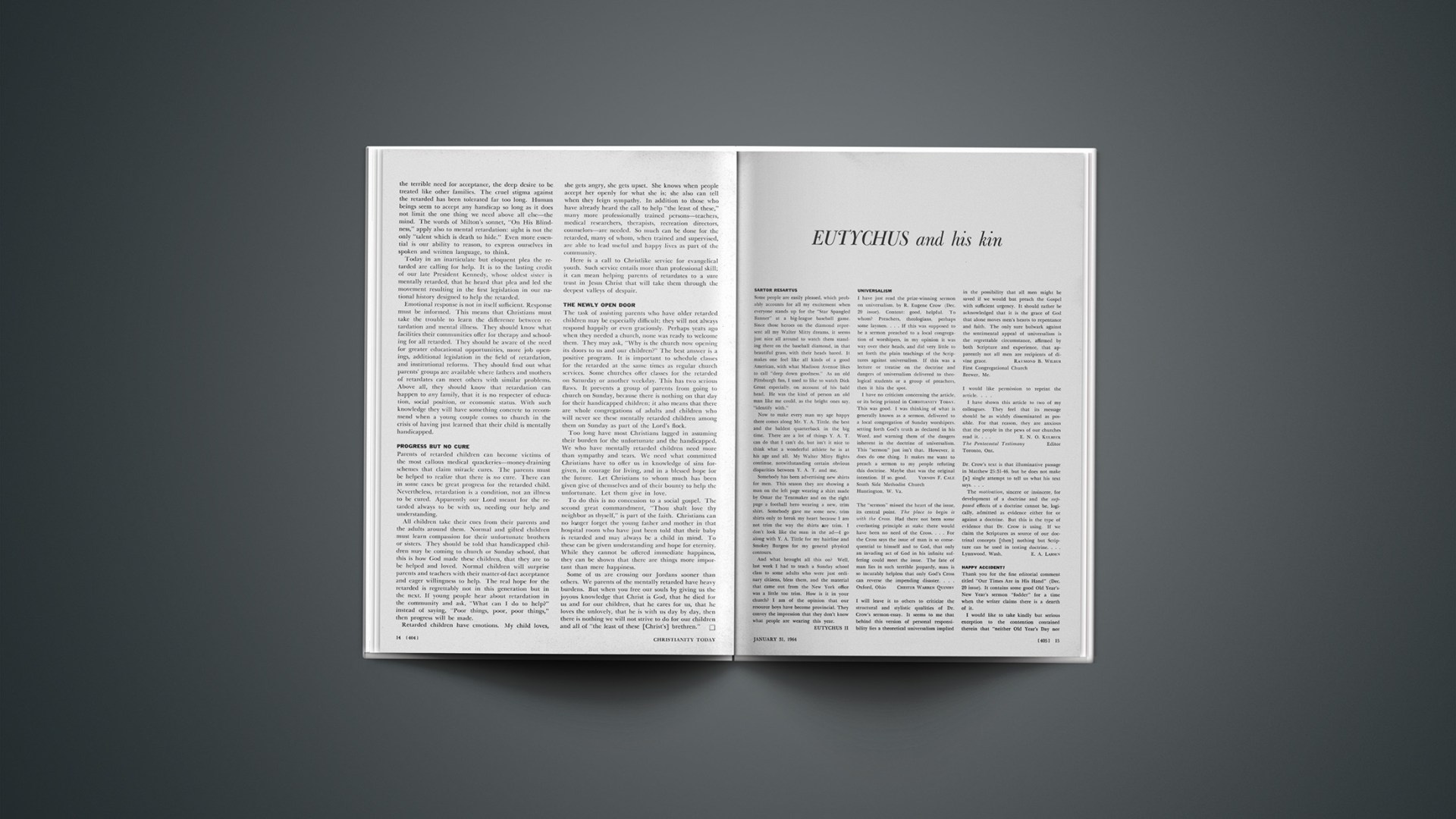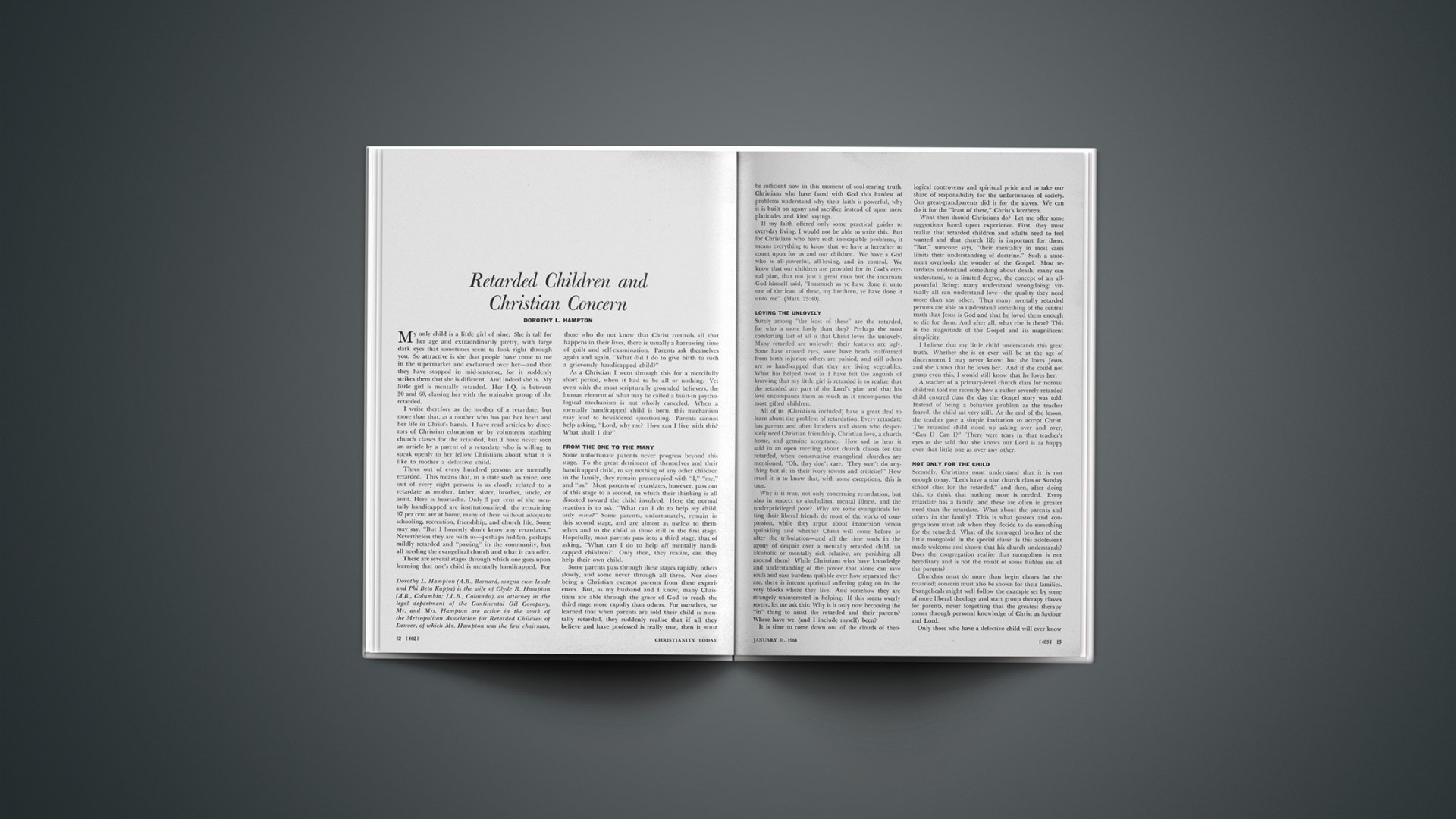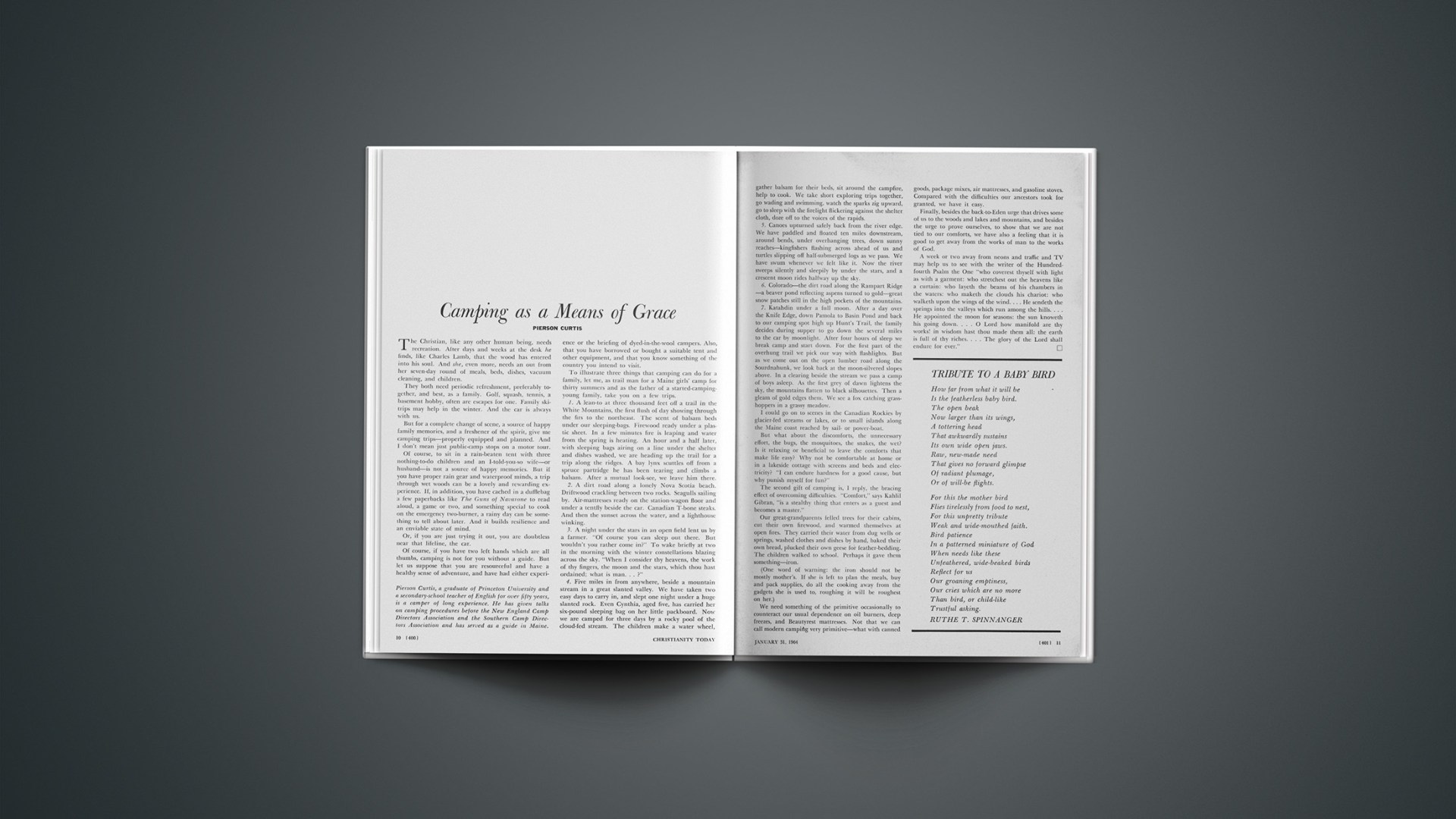How is a Christian responsible to God for the use of his free time? This issue deals with several of the more important aspects of leisure in the context of harried modern life. The editors feel that leisure represents a vast area deserving of continuing Christian inquiry (see the editorial on page 20). More articles on the subject are scheduled for future issues.
Related to the proper use of leisure is the Christian’s responsibility in good works. One area needful of the time and effort of many more evangelicals is that of mental retardation. For a survey of this need, see Mrs. Hampton’s article on page 12.

